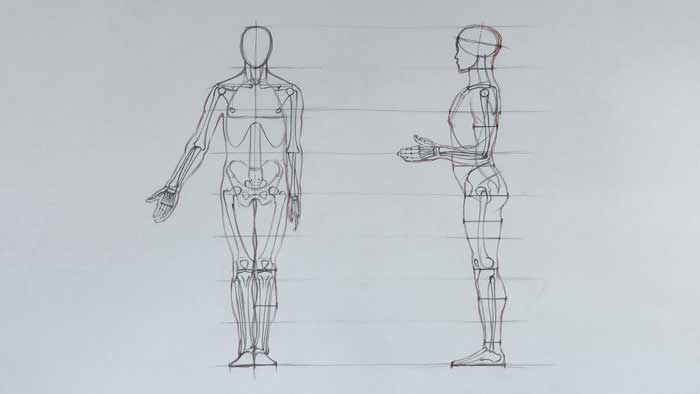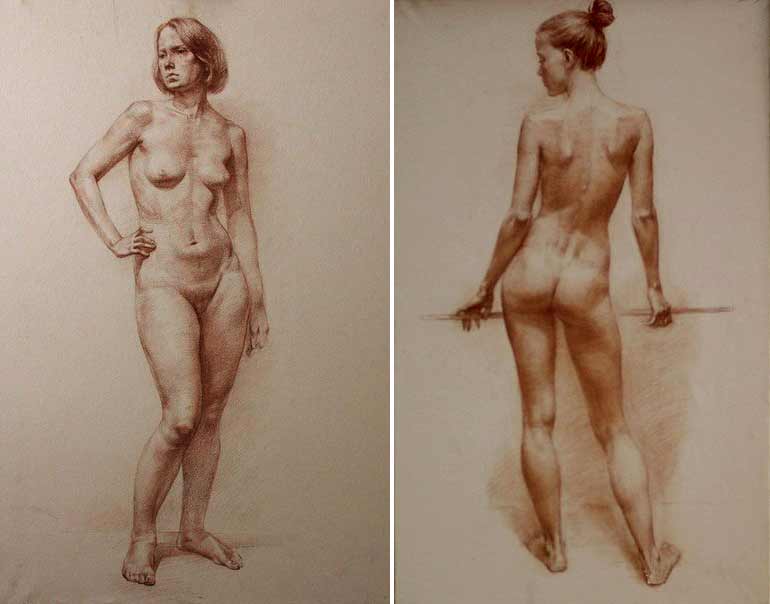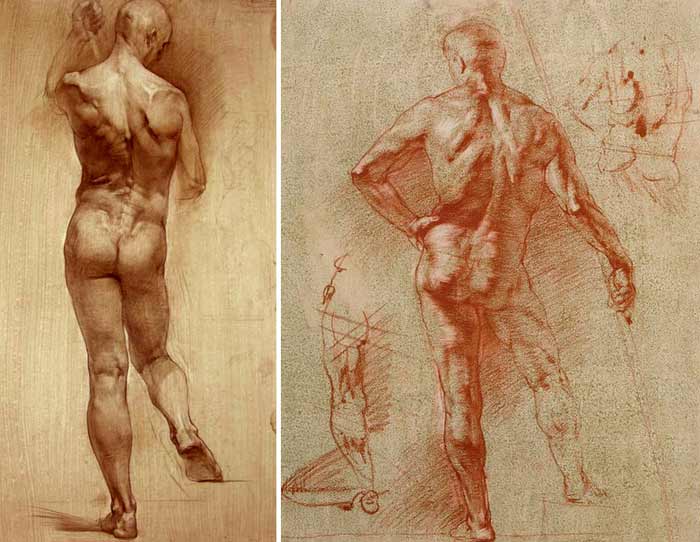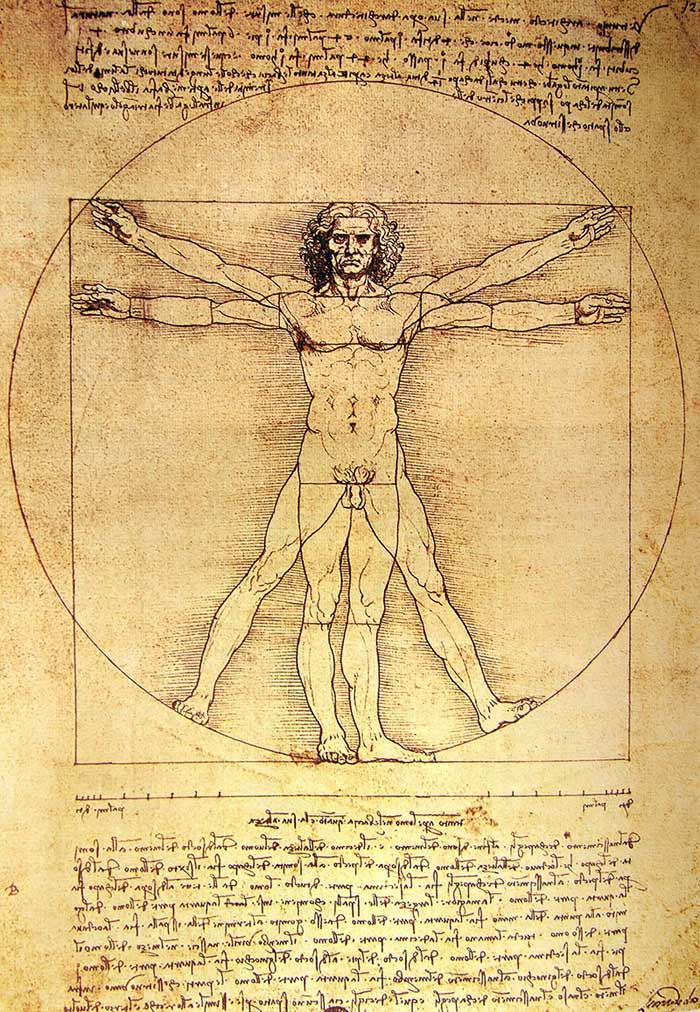Human Figure Proportions
Human Figure Proportions
Anatomy Lesson 3
It is essential to know the human figure proportions when making realistic figurative artworks.
In this video lesson, you will discover human figure proportions every figurative artist must know.
The Medial Line of the human figure runs through the middle of the body, from top to bottom. It is the central axis of the figure’s symmetry. The medial line divides the body vertically into two equal halves, left and right.
One-half of the figure’s height coincides with the pubic bone of the pelvis.
The top half can be sub-divided into two equal parts. This division goes through nipples of a male chest and indicates the chest line.
Once again, the top quarter can be halved, giving the one-eighth of the body height, which is equal to the size of a head. So, the head would fit 8 times in the total figure height.
These are the classical human body proportions. Not every adult person has 1 to 8 head-to-body ratio. On average this ratio is between 1 to 6.5 and 1 to 8. Infants and children have relatively bigger heads, and as they grow, the body becomes considerably taller, while the head doesn’t grow as much.




Let’s examine the human figure proportions further.
In the middle of each collarbone, there is a notch. This notch is a gap between the muscles of the breast and deltoid.
Men’s nipples are located on the chest line below the notches of the collarbone.
The waistline is located three-eigths (or 3 heads) down from the top.
The ribcage is shaped like an egg, with its thicker end pointing down.
The lower edge of the ribcage is slightly higher than the waistline.
The upper border of the pelvis, or top of the iliac crest, is located slightly below the waistline.

The hip joint sockets are aligned with the axis of the pubis.
The division, which is one-fourth from the bottom, goes just below the knee joint.
The line of the knee joint is located a quarter of the height of the human head above the line of the bottom quarter of the overall figure height.
The distance between the top of the kneecap and the line of the bottom fourth of the figure’s height is equal to one-half of the head.
The line of the lower quarter of the figure height goes through the tibial tuberosity, which is the elevation on the shinbone, called the tibia.
The calf bone ends lower than the shinbone.
The height of the feet is equal to the one third of the head’s height.
The distance between the upper edge of the ribcage and the lower end of the breastbone is equal to the height of the head.
The height of the face is the same as the length of the breastbone, and also the same as the length of the collarbone.
The lower end of the upper arm bone, which is called humerus, coincides with a line that is 3 times the height of the head from the top of a human figure, when the arm is hanging down.
The wrist of the hanging down arm is located at the level of the pubic bone, halfway up the body.
The length of the hand is equal to the height of the face.

Once again, you have to remember that human body proportions described here describe the classical male body, with the total height of the figure being 8 times the height of the head.
Such proportions will vary from person to person in real life. Not everyone fits this canon.
In the female body, the body to head ratio is different.
The classical canon of the female body has the figures height at seven and a half times the height of the head.
Throughout the history of art, human body proportions have not always been measured by heads.

Some canons were based on the length of one’s feet (thus creating the imperial measurement system). Hands, arms, fingers were also used as a measuring units.
The word canon, or set of proportions, comes from Latin and means “measuring line.”
Canons have changed through history, according to artistic needs, taste, and sense of beauty.
In ancient Egypt, artists used feet as a measuring unit, while the head fit into the body 8 times.
Early Greek art had a seven-and-a-half head canon, while later classical Greek art shifted to eight heads, making the legs longer to create an athletic body structure.
In the Renaissance, artists re-discovered the classical canons and developed their own.
Old masters like Vitruvius, Leonardo da Vinci, Albrecht Dürer, and many others were fascinated by the human body and studied its proportions with a great thirst for knowledge.
[ The full lesson is avaibale to Anatomy Master Class members ]
To learn more about human figure proportions, enroll in the Anatomy Master Class
Simple Pricing, No Surprises
One-time payment - Only $97 USD
ENROLL NOW



